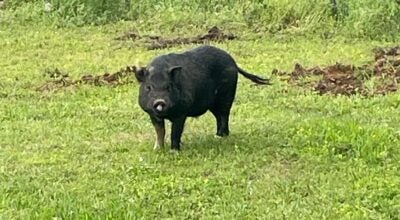UM students document the past in archaeology dig
Published 2:44 pm Saturday, November 10, 2018
University of Mississippi archaeology students have an opportunity to show the public their findings, through one little artifact at a time.
Hosting a Public Archaeology Day at Rowan Oak on Saturday, students can show off remnants from the house and other relics discovered on the property using a specific shovel technique.
Director of the Center for Archaeological Research Tony Boudreaux said the archeology day gives his students an opportunity to not only show findings of relics from before the Civil War, but to also explain their historical meaning properly.
“The kind of artifacts we’re going to be showing are not very exciting,” Boudreaux said. “They’re going to be rusty nails, pieces of glass or broken pieces of pottery.”
While the types of artifacts Ole Miss students found in their digs pale in comparison to what professionals might find on a larger scale, Boudreaux said what’s exciting about the small relics is the pattern they left behind.
Specifically, the patterns Boudreaux and his students pieced together from their findings can explain how people lived in the past.
Saturday is where Boudreaux will to allow students to be “ambassadors for archaeology,” as their understanding of the smaller findings is what makes bigger discoveries more important.
He said he wants his students to explain to the public about the shovel method of archaeology they used, which had students dig 20-meter holes on a grid system to find patterns where relics might be located, and that archaeology is ultimately a simple process.
“In this particular case, the importance is there were people that lived in Roanoke and archeology is one of the only ways we’ll learn about their lives because we just don’t have those documents about them,” Boudreaux said.
One of the patterns Boudreaux and his students were able to piece together was the existence of two slave families that lived on the Rowan Oak property, which was owned by slave owner Robert Sheegog in the mid-1800s before being purchased by literature legend William Faulkner in the 1930s.
While books and documents about Sheegog exist, Boudreaux said the artifacts that he and his students found are “one of the only ways we have access to learning about these people that were living there prior to the end of the Civil War.”
“The archaeology of slavery is most certainly one of these aspects. Our aim is to uncover the daily activities of the slaves who certainly had a great impact on the property as well as in the community of Oxford,” Ole Miss sophomore Arianna Kitchens from Collins said in a news release. “We hope to build on the already existing narrative of life at Rowan Oak to include the story of Robert Sheegog and his slaves.”
The Public Archaeology Day is set for this Saturday from 10 a.m. to 3 p.m., and is free and open to all ages at Rowan Oak. But, to Boudreaux, archaeological finds aren’t just limited to historical venues.
“There’s potentially this whole other layer of the past, of history that can be recovered with archaeology,” Boudreaux said. “That’s the case virtually





